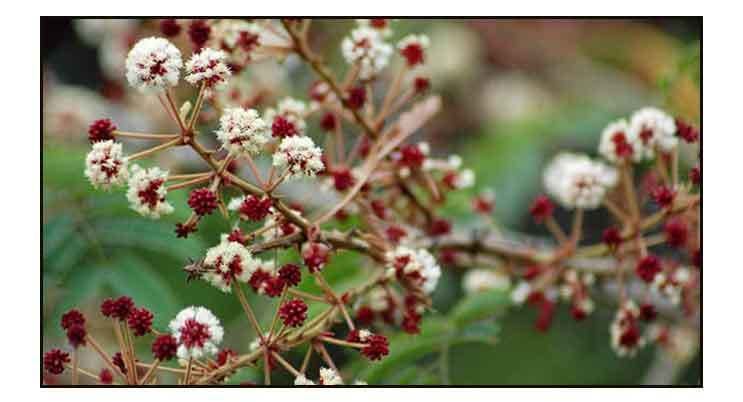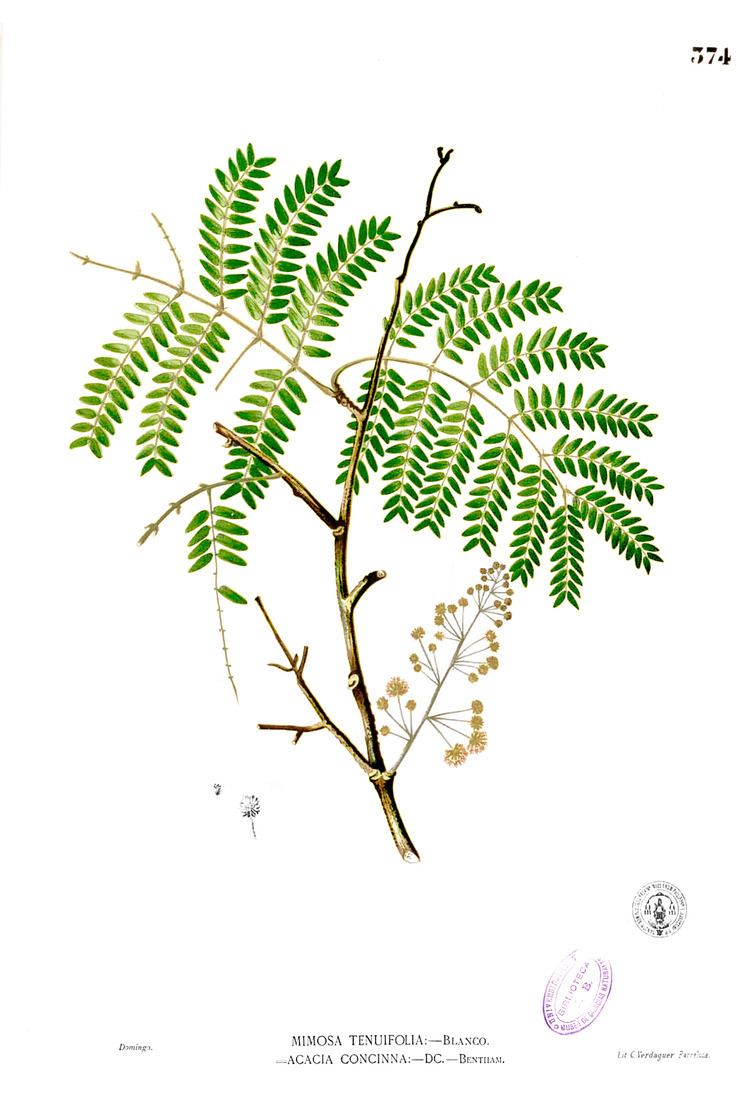Kingdom Plantae Genus Acacia Rank Species | Family Fabaceae Scientific name Acacia concinna Order Fabales | |
 | ||
Similar Indian gooseberry, False daisy, Soapberries, Waterhyssop, Holy Basil | ||
Acacia concinna shikakai
Acacia concinna is a climbing shrub native to Asia, common in the warm plains of central and south India. The tree is food for the larvae of the butterfly Pantoporia hordonia. Alkaloids are found in the tree's fruit.
Contents

Acacia concinna
Shikakai

Acacia concinna has been used traditionally for hair care in the Indian Subcontinent since ancient times. It is one of the Ayurvedic medicinal plants. The fruit is known in India as shikakai (Hindi: शिकाकाई, śikākāī; Kannada: ಸಿಗೆಕಾಯಿ; Tamil: சிகைக்காய் - literally "hair-fruit", sigai=tresses and kaay=fruit;) "fruit for hair" in its use as a traditional shampoo. In order to prepare it the fruit pods, leaves and bark of the plant are dried, ground into a powder, then made into a paste. While this traditional shampoo does not produce the normal amount of lather that a sulfate-containing shampoo would, it is considered a good cleanser. It is mild, having a naturally low pH, and doesn't strip hair of natural oils. Usually no conditioner is needed, for shikakai also acts as a detangler. An infusion of the leaves has been used in anti-dandruff preparations.

A. concinna extracts are used in natural shampoos or hair powders and the tree is now grown commercially in India and Far East Asia. The plant parts used for the dry powder or the extract are the bark, leaves or pods. The bark contains high levels of saponins, which are foaming agents found in several other plant species used as shampoos or soaps. Saponin-containing plants have a long history of use as mild cleaning agents. Saponins from the plant's pods have been traditionally used as a detergent, and in Bengal for poisoning fish; they are documented to be potent marine toxins.
Other uses
The leaves have an acidic taste and are used in chutneys.
Chemical constituents

In commercial extracts, when the plant is hydrolyzed it yields lupeol, spinasterol, acacic acid, lactone, and the natural sugars glucose, arabinose and rhamnose. It also contains hexacosanol, spinasterone, oxalic acid, tartaric acid, citric acid, succinic acid, ascorbic acid, and the alkaloids calyctomine and nicotine.

